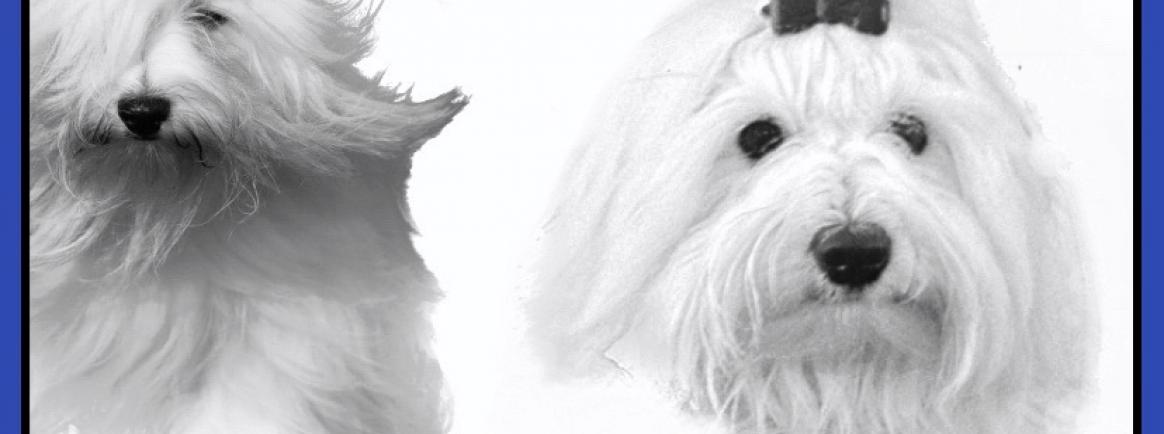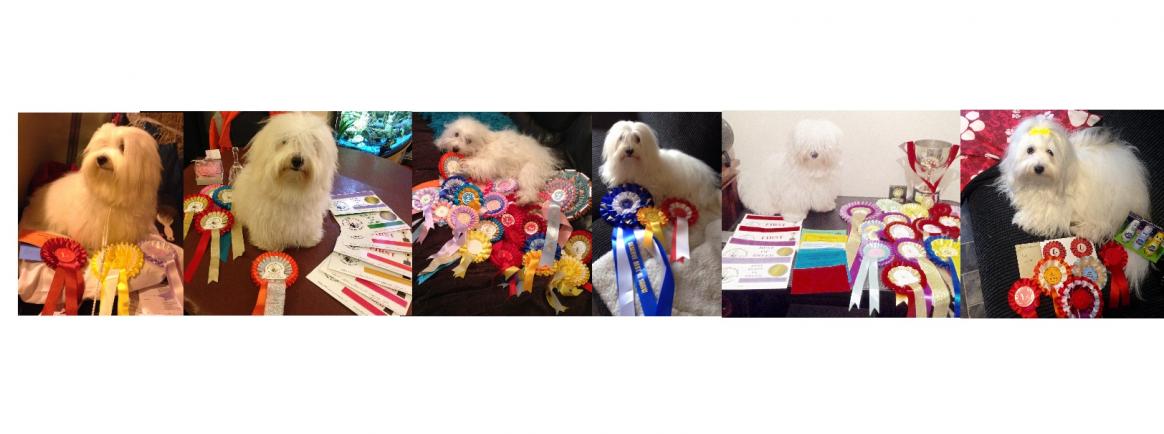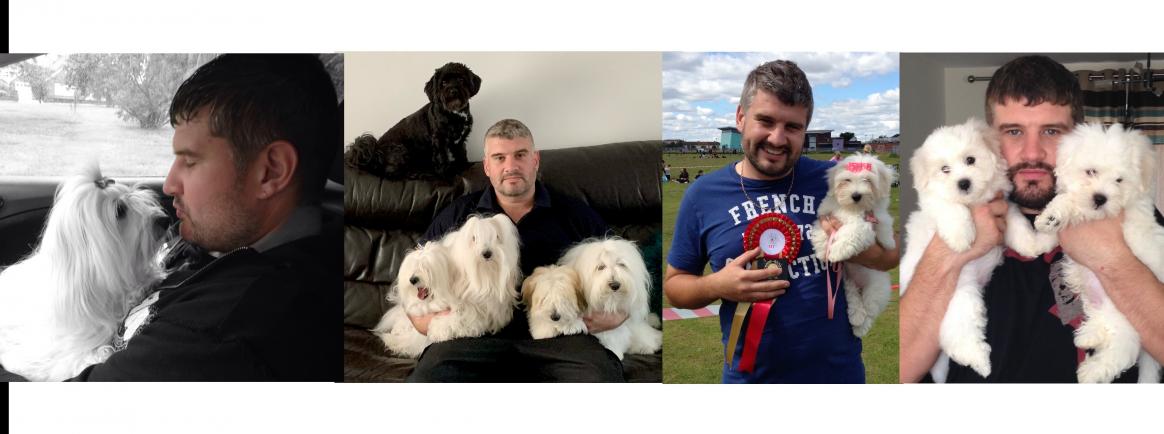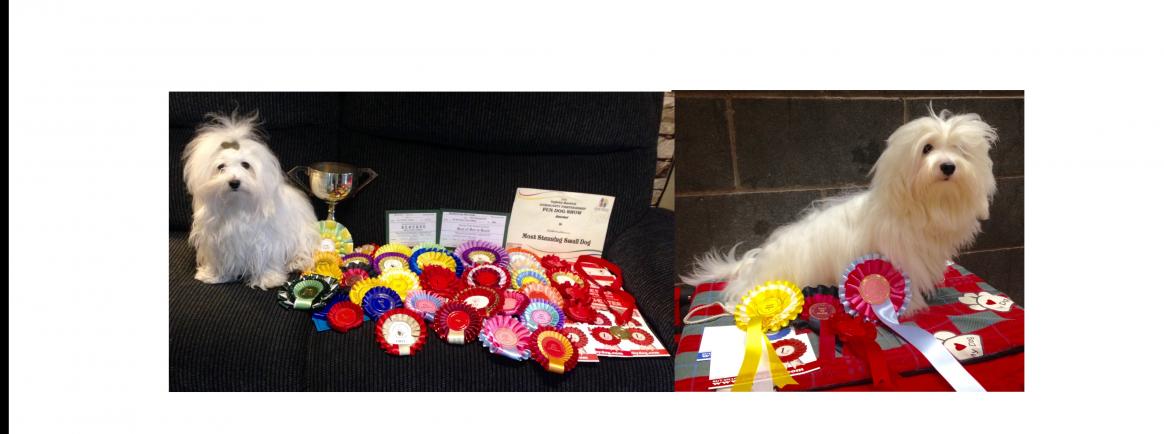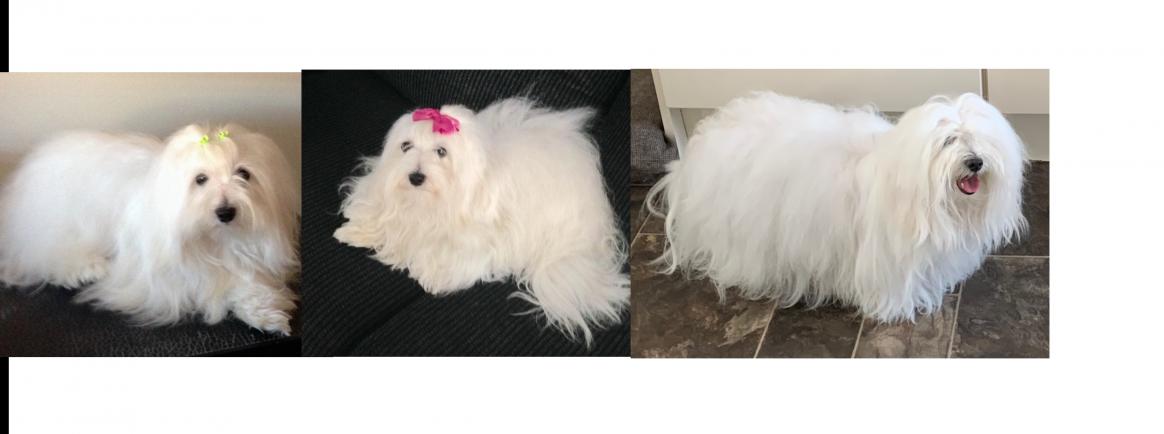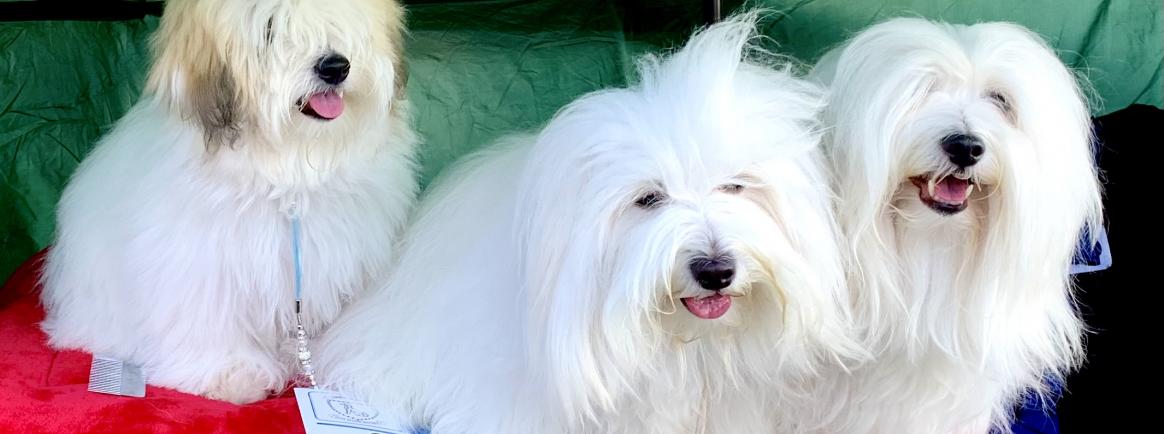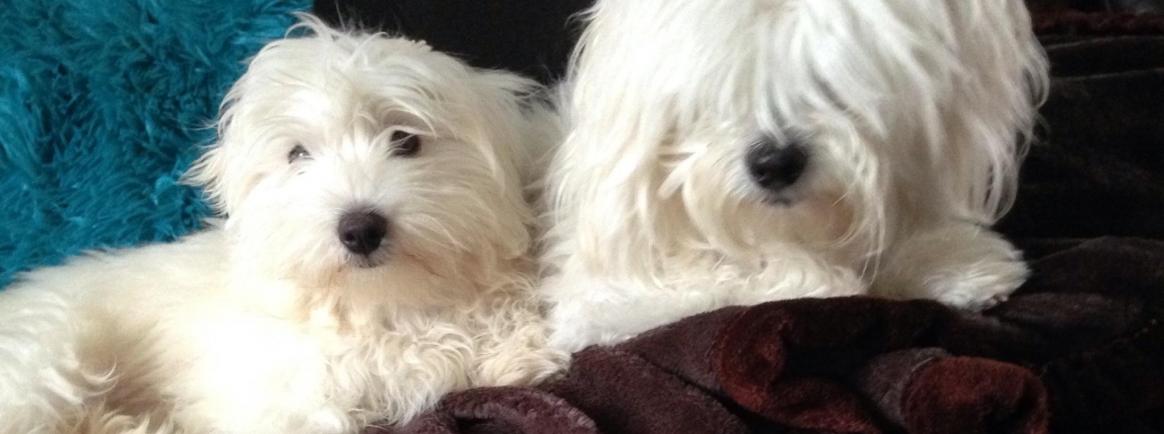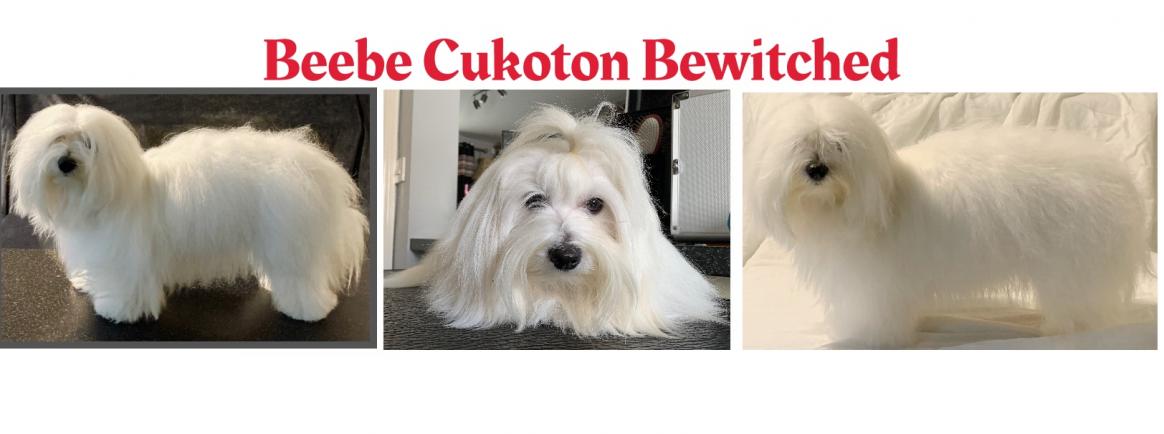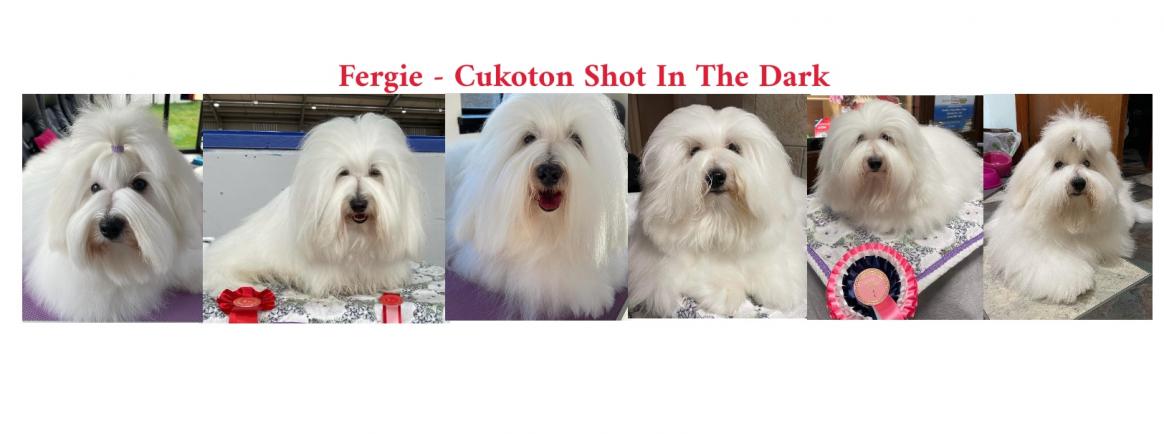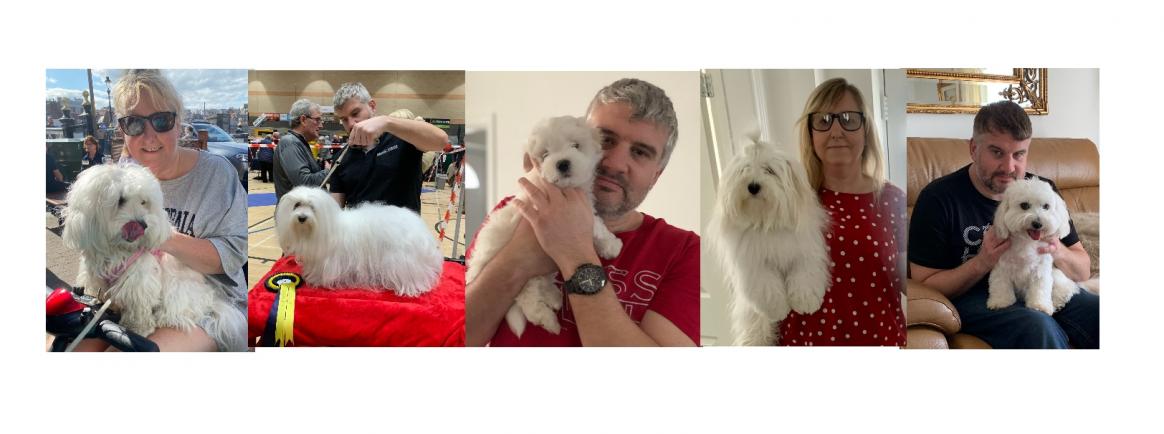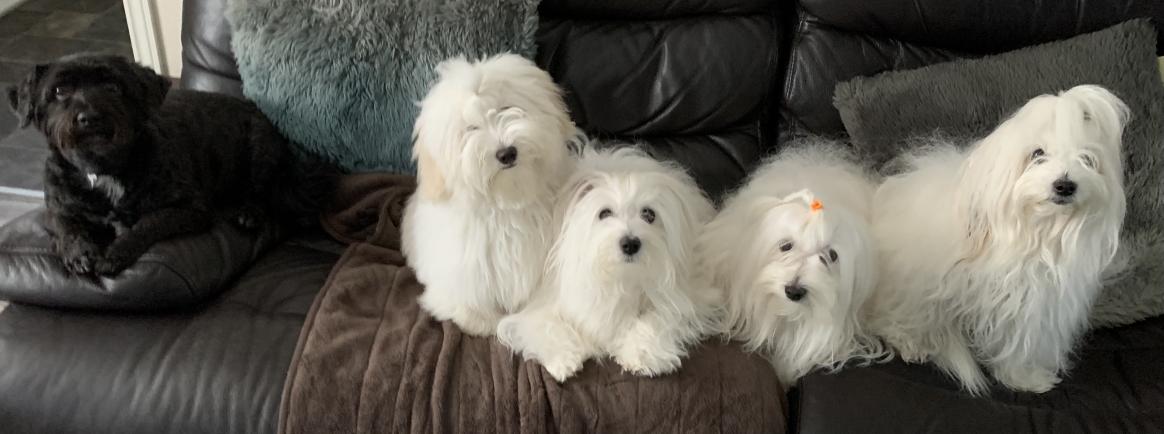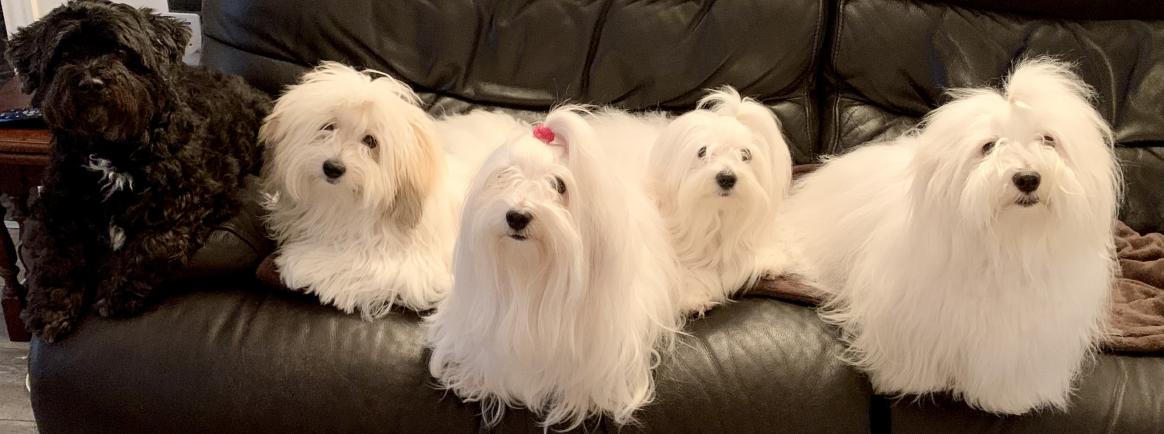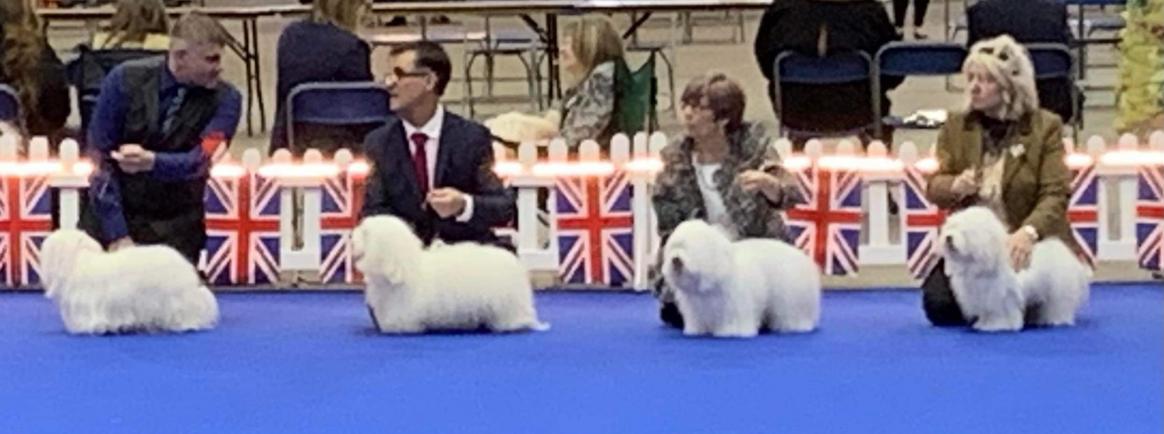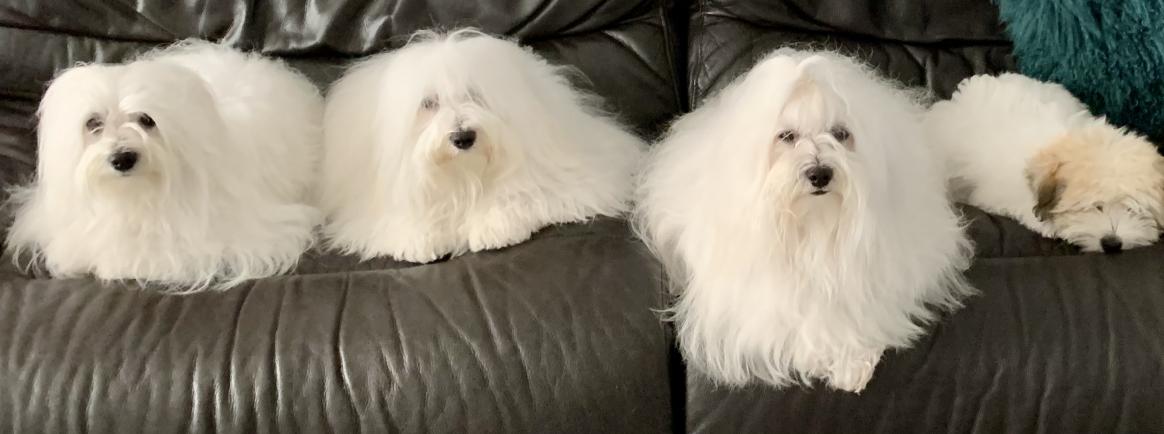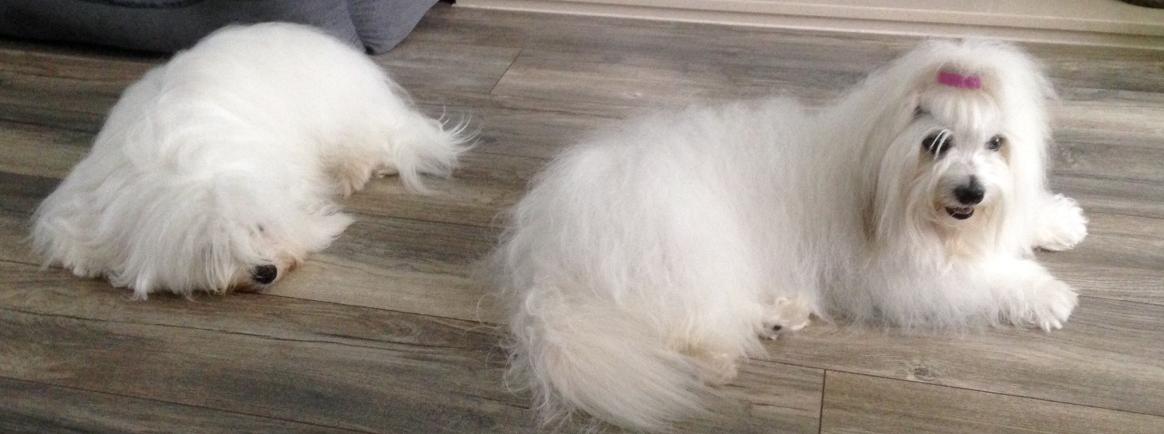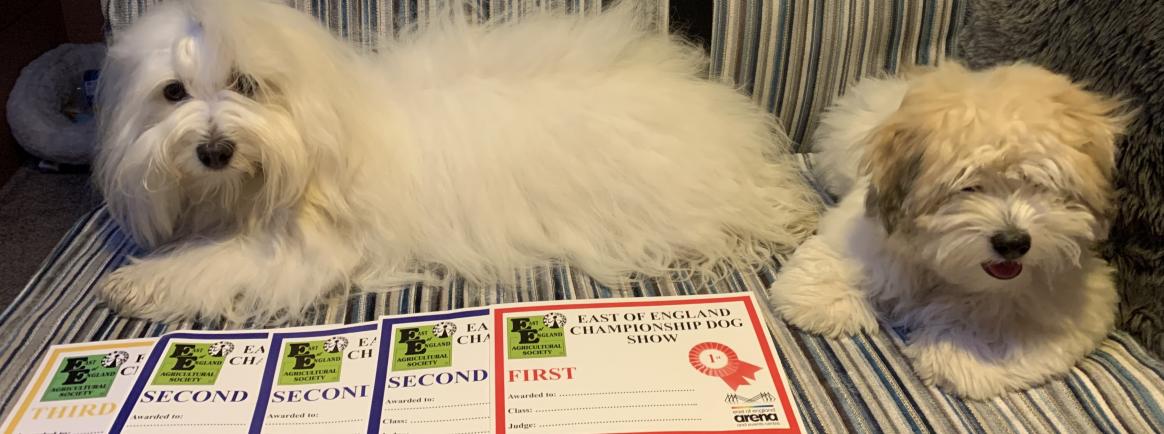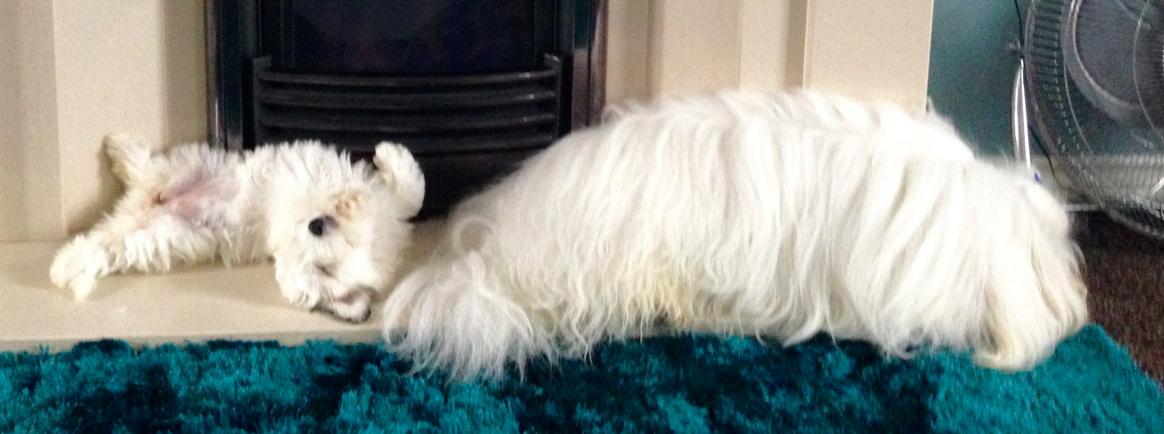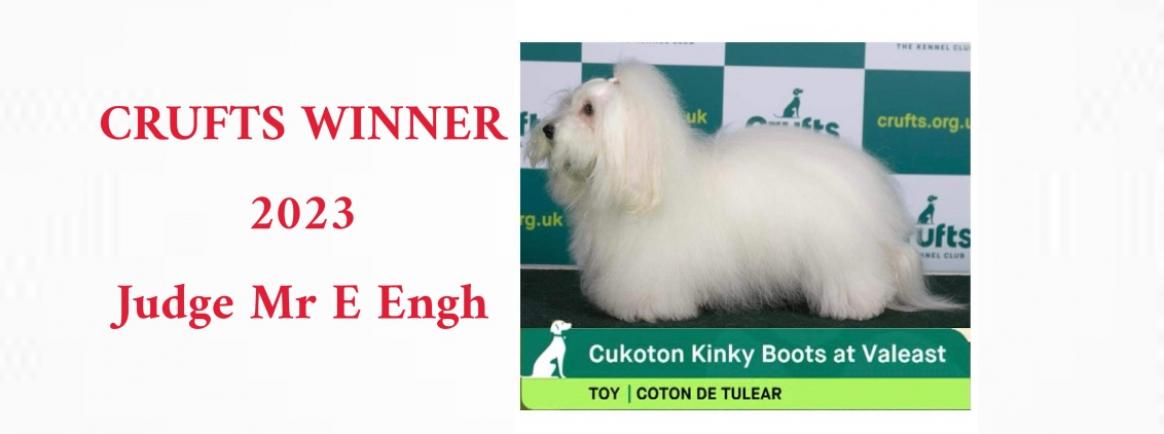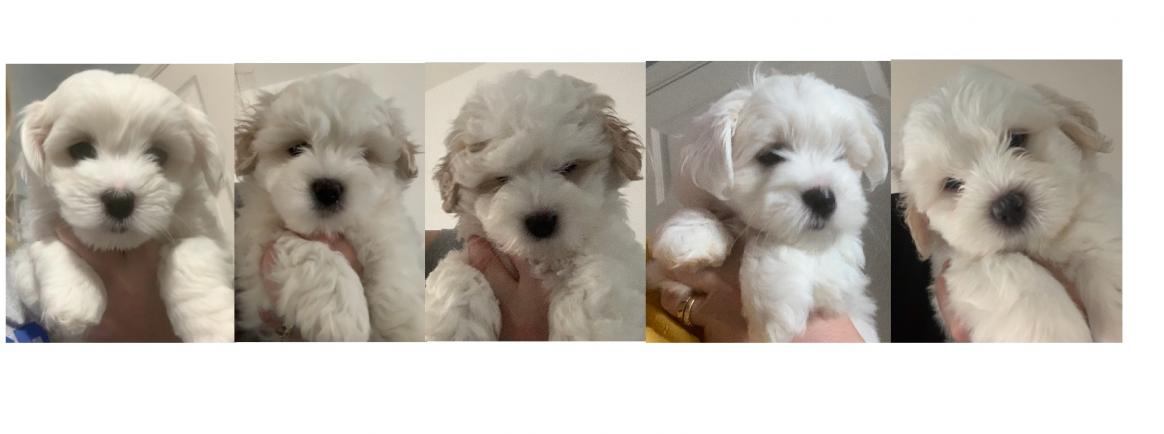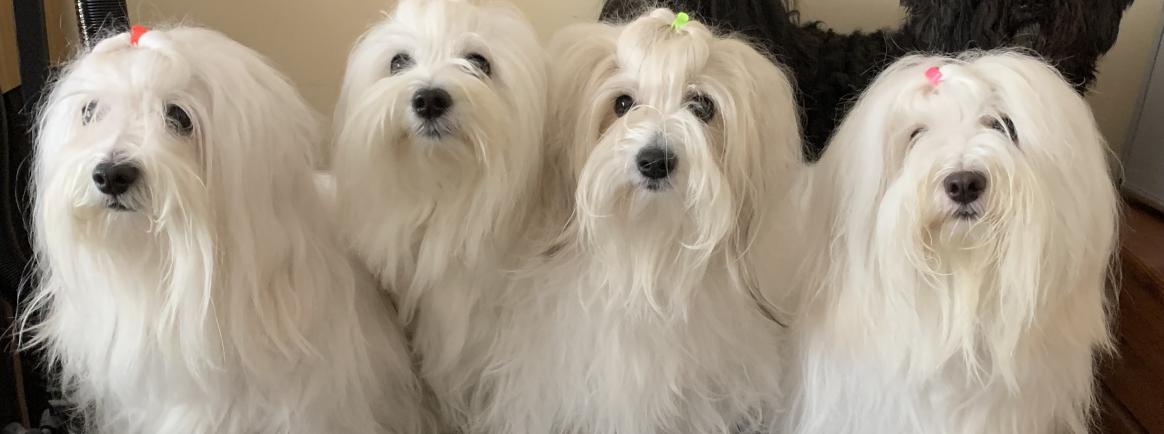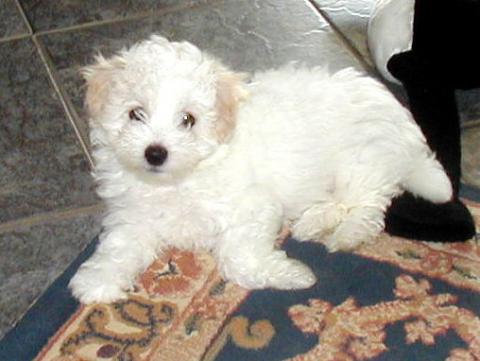
There are two principle colour varieties of the Coton de Tulear White and Tri-Colour. Both colour varieties may be born in litters
The FCI standard supports only pure white dogs and has very little toleration in its standard for pups that are not
pure white. However, in the show ring, when the FCI standard is used, well-marked, coloured Coton pups are shown and sometimes win, even though the
FCI standard has no provisions for brown, black, and white (Tri-Colour) in pups nor is it at all clear at what age such a coloured pup would be
disqualified by an FCI judge because it has retained its colour. In fact, many, perhaps most shows that use the FCI standard seem to judge Cotons of
colour by a unwritten standard. In a marked contrast other standards like the Coton de Tulear Club of America (CTCA) has always strongly supported all colour varieties.
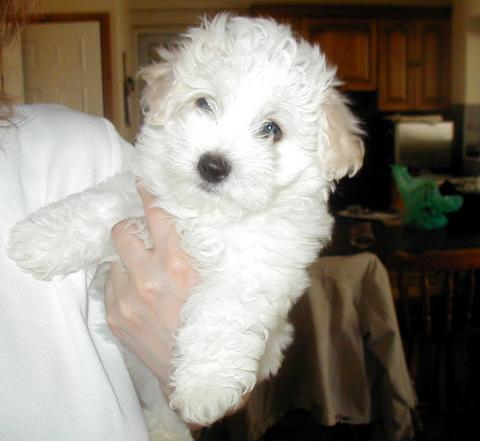
(The puppy has champagne ears which when fully grown will appear completely white)
WHITE-White Cotons are all-white. Like some other Bichon breeds, a White Coton often has "champagne" (cream-biscuit/light tan color) patches on its ears
and may even have a body patch or saddle of champagne faintly visible. These patches may persist throughout a Coton's lifetime, but most often they fade.
However, in almost every case, the coloration will become visible if the coat is wetted (soaked) even in Cotons greater than 14 years old.
The FCI standard has used this term (jaune). And I think it refers to the "Champagne/cream biscuit/light tan colouration.
Some Malagasy Cotons (bloodlines from Madagascar exclusively) May exhibit liver (light reddish-tan, chestnut coloured
patches which persist in maturity. These White Cotons have only the colour White and the liver patches.
In older Cotons, these liver patches fade considerably, but they do not disappear completely even in Cotons greater than 14 years old. This persistent
liver patch colouration isn’t usually seen in the European bloodlines, but as breeders look for different lines around the world one day it may exist.
The term "fade" means one of three things: (1) the colour in the hair shaft is replaced gradually with white beginning at the base of the
hair (e.g., brown hair fading to white in a Tri-colour Coton),
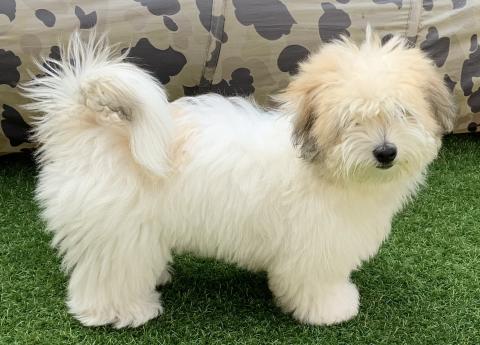
or (2) the coloured hair is lost and replaced completely by a hair shaft of another
colour (usually white top coat hair replacing brown or tan), or (3) the coloured top-coat hair remains but becomes overwhelmed by a profusion of
white undercoat hairs in maturity or old age (e.g., black coloration fading to gray or silver in a some Cotons).
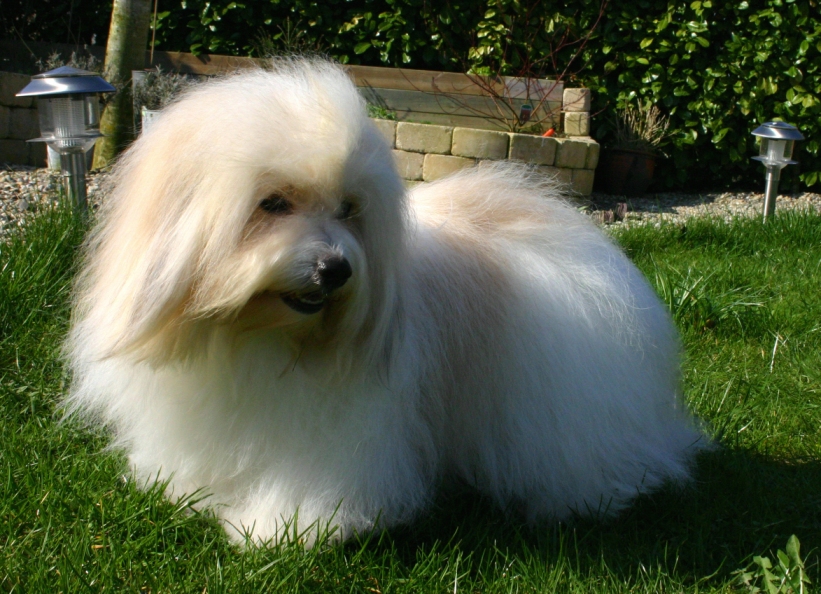
Tri Coloured Coton
A Tri-Colour may appear with coloured patches over some or much of its body. The patches appear brown (or tan) with a regular scattering of
black hairs, or largely brown (or tan) with a ring of black hairs. These are strikingly beautiful puppies and juveniles, but their colour appears to fade
as they mature. The fading process can take 18 months. Tri-colour Cotons are ALWAYS identifiable as Tri-colours (NOT White Cotons) even as very old
individuals. Patches of tan/cream biscuit colour remain as does a dusting of black guard hairs. These are readily apparent when the dog's coat is wetted.
From a distance, an adult Tri-colour will usually appear "off-white" or slightly cream coloured when viewed next to a pure White Coton.
Skin Colour of the Cotons
Most Cotons skin colouration is pink, but there are Cotons born white with champagne ears that have dark, purple or black skin in many areas
My litters up to now the Cotons stomach areas and back top lines are mainly dark, or mottled with pinkie, grey spots of colour.
All were born pure white with champagne ears. All have full pigment on eyes nose and mouth and pads.
All have either full black or black with some purple dots skin colour inside their mouths.
I have studied skin colour but not specific to dogs, and have read papers about Huskies skin colour due to climate and environment, and a noticed change when these dogs settle in another climate.
Normally with animals in hot climates such as Madagascar, whatever skin area isn't protected by the coat will be dark or black I.e. rectum scrotum. Darker skinned animals have more protective melatonin in their skins. You produce more melatonin when you're in a sunny climate and need the protection, less when you're not. Black skin colour protects those who live near the equator from burning in hot and humid climates. It also protects many lighter coated animals when swimming.
If the original Coton’s that evolved in Madagascar had a thin textured coat in the beginning, then the chances are the skin would be more black in colour. The hotter the country the darker the skin but the coat colour is a different matter as we know white will help reflect. There are many Lemurs from Madagascar who have all got various coloured coats, some white and some black. BUT Depending on the colour of the coat, dictates to them what times to forage for food in the open. As Madagascar is a very hot humid shaded climate because of the rain forest they can get their food at any time really. Some have the black skin but some do have pink due to the amount of shade.
My theory is, (It could be WRONG, I appreciate that) as the Coton’s coat thickens, due to change of environment, climate and breeding the need for black skin pigmentation will disappear and eventually die out. I have certainly noticed the huge increase in the fullness of the coats over the past few years. They are much thicker and more pleasing to the eye than what the first Coton’s i.e James had when they came from Madagascar. As the popularity for a thick coat takes hold in the show ring. My fears are the noses of Cotons may also begin to fade from black to a brownish pink as the need for protective melatonin dies out.
I do hope that the thickness of coat will never become more fashionable than the more important aspects of the Coton de Tulear Breed standard. Confirmation and movement is the key to a beautifully structured dog. A thick coat can hide many faults to the untrained Coton enthusiast.
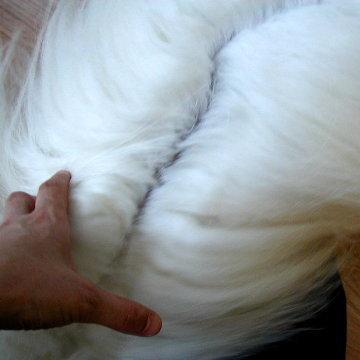
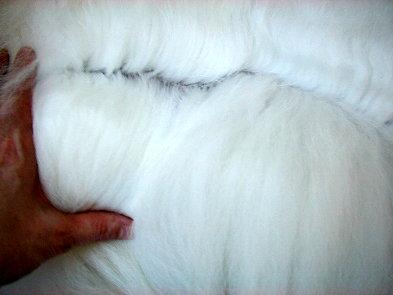
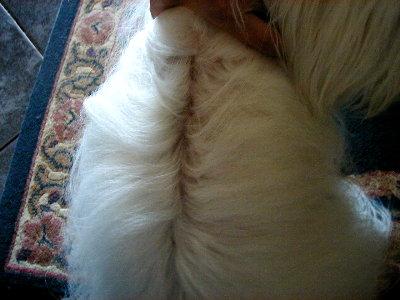
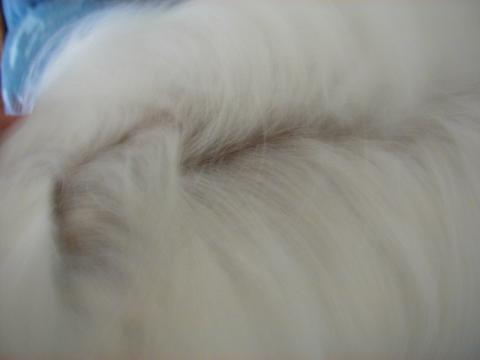
Sources
Coton de Tulear – The comprehensive Owners guide by Wolfgang Korr
Les Coton de Tulear d’lvandry (Cathering Cellier doughter of M Coudre)
The official Coton de Tulear Book by Robert Jay Russel
CTCA information

